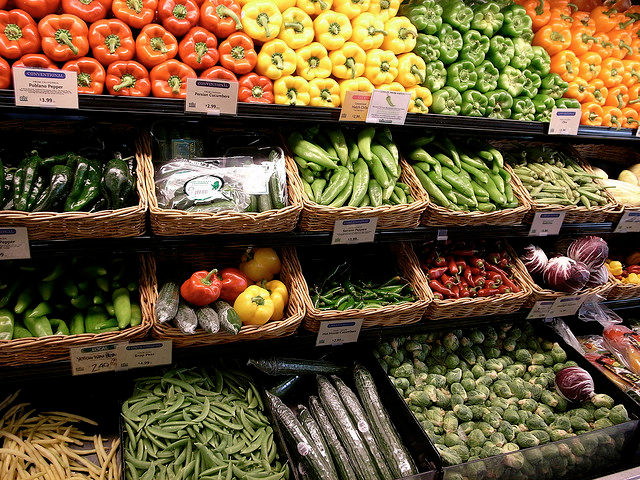Confession: I stepped into a Whole Foods for the first time ever this summer. And while yes, it was magical, and yes, I appreciated all of the local and organic produce, as local nutritionist Betsy Ramirez points out, there’s a reason it’s often dubbed “Whole Paycheck.”
But shopping at Whole Foods doesn’t have to be so expensive that you’re silently sobbing as you hand over your credit card. We consulted with grocery-shopping expert Ramirez and fellow nutritionist Danielle Omar to see how they manage to save some major bucks at Whole Foods. Print out this list before you make your next shopping trip, and leave Whole Foods with a heaping bag of healthy groceries—and a much healthier bank account.
1) Check the website for coupons and sale tips.
Each month Whole Foods publishes a Whole Deal coupon booklet that’s available for download. You can also check out the in-store flyer to see what’s on sale for the week at each location. Says Omar, “I take advantage of the Whole Deal coupon booklet every month and work my meal planning for the week around what’s on sale.” Also helpful, says Ramirez, is the Whole Foods recipe app. “Everyone should have this. Not only do you have access to recipes at your fingertips, but you can access your store’s sales flyer. It also features a budget-friendly meal planner broken down by date, nutrition information, and special diet.”
2) Stick to seasonal produce.
“No strawberries for me in February,” says Omar. In-season produce tends to be cheaper and more often on sale. Ramirez says if produce is out of season, head to the frozen section and compare the frozen vegetable or fruit with the fresh.
3) The bulk bin is your friend.
Stock up on lentils, grains, and spices with the bulk bins. “With spices, you can buy just enough for a recipe for less than a quarter,” perfect for testing recipes, says Omar. Also worth noting: You can get 10 percent off a case of bulk items 15 pounds or larger.
4) Buy copious amounts of wine.
No, really. A 10 percent discount is available when you buy six or more bottles of wine of any size.
5) BYOB (Bring Your Own Bag)
If you’re shopping in a DC location, you’ll get charged extra when you use the store’s bags. Ramirez says Whole Foods gives you a 5- to 10-cent discount for each reusable bag you use at the checkout.
6) Buy only what you need.
We’ve all been there: We buy a head of lettuce to make a salad, but within a few days the leftover leaves have gone to waste. Omar says you can ask a Whole Foods employee to help you out: “If I only need a small portion of a particular item, I’ll ask them to slice it in half for me. This saves me money, and I don’t feel pressure to use a whole cabbage when I just needed a small amount for a recipe.”
7) Buy Whole Foods brand products.
Don’t look down on the 365 Everyday Value products by Whole Foods. “They can fill your cart with quality products, including natural and organic lines,” and they won’t break the bank, says Ramirez.
8) Become Facebook friends with Whole Foods.
This is one of the easiest ways to find out about sales at Whole Foods. The company also posts on Twitter and Pinterest.
9) Freeze your food.
If you know you’re not going to go through all those berries in the next three days, freeze them. Frozen produce is just as healthy as fresh produce, if not more so.
An earlier version of this post stated that a customer can get an item for free if it is the last of its type on the shelf. According to a Whole Foods representative, the company has no such policy.



















